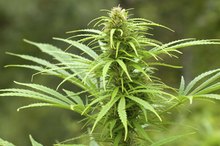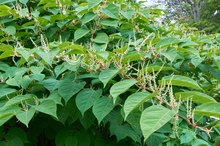Cons of Medical Marijuana
The use of marijuana to treat medical conditions has been debated by health care experts, both having significant clinical claims for and against its use. Medical marijuana can help to stimulate appetite in cancer and AIDS patients. It also helps to alleviate some of the symptoms of glaucoma and multiple sclerosis. Although medical marijuana is generally favored by its patients, there are several arguments against its medical use and effectiveness. The arguments against the use of medical marijuana include the increased risk of psychosis, inferior effectiveness in treating glaucoma and increased risk in developing certain types of cancer 3.
If you are experiencing serious medical symptoms, seek emergency treatment immediately.
Increased Risk of Psychosis
One of the arguments against the use of medical marijuana centers around its increased risk of both acute psychosis and chronic mental illness, including schizophrenia. Marijuana is a powerful psychoactive drug and can have serious effects on the mind and body outside of its intended medical use. Some of the psychoactive side effects of using marijuana include hallucination, anxiety, memory loss and confusion. In the August 2007 issue of "The Lancet," Dr. Stanley Zammit and associates found a strong significant relationship between marijuana use and increased risk of psychosis, including severe anxiety, depression and suicidal tendencies 1. Dr. Sonija Luzi and associates, at the Institute of Psychiatry in London, state that two primary chemical agents found in marijuana, tetrahydrocannabinol and endocannabinoids, proved largely responsible for inducing the psychotic symptoms in marijuana users 3.
- One of the arguments against the use of medical marijuana centers around its increased risk of both acute psychosis and chronic mental illness, including schizophrenia.
Inferior Treatment of Glaucoma
Differences Between Smoking Cigarettes & Marijuana
Learn More
Marijuana has been associated with treating glaucoma, an eye disease, since the 1970's 3. The National Eye Institute states that early studies showed that marijuana smoke lowered the internal pressure inside the eye caused by glaucoma 3. In its early interventions in the 1970's, marijuana proved beneficial in treating the disease, but new medications and treatments have rendered marijuana as an inferior choice for this particular disease. Current treatments employ medications approved by the Food and Drug Association as well as laser surgery. The side effects of medical marijuana such as increased heart rate and decreased blood pressure have raised concerns that it may not be the most effective current choice for treating glaucoma 3.
Increased Risk of Certain Cancers
Another argument against the use of medical marijuana asserts that marijuana increases the risk of developing certain types of cancer such as lung and testicular cancer 4. The National Institute on Drug Abuse states that marijuana smoke can cause cancer of the respiratory tract because of the irritants and carcinogens it contains 3. They stated that marijuana smoke contains 50 to 70 percent more carcinogenic hydrocarbons than tobacco smoke. In addition, they stated that one of the active ingredients in marijuana, tetrahydrocannabinol, was significantly associated with respiratory infection and tumor growth. In addition, a study by Dr. Stephen Schwatz and associates at the Fred Hutchinson Cancer Research Center found that smoking marijuana increased the chances of developing testicular cancer by about 70 percent 4. One of the reasons why marijuana may cause cancer is because it is significantly linked to DNA damage, which may initiate tumor growth, according to Dr. Rajinder Singh and associates at the Cancer Biomarkers and Prevention Group in Sweden 5.
Related Articles
References
- The Lancet; "Cannabis Use and Risk of Psychotic or Affective Mental Health Outcomes: A Systematic Review"; Dr. Stanley Zammit; August 2007
- "Neurotoxicity Research"; What is the Mechanism Whereby Cannabis Use Increases Risk of Psychosis?; Sonija Luzi; August 2008
- National Eye Institute: Glaucoma and Marijuana Use
- Fred Hutchinson Cancer Research Center: Marijuana Use Linked to Increased Risk of Testicular Cancer
- ScienceDaily: Marijuana Damages DNA And May Cause Cancer, New Test Reveals
- Substance Abuse and Mental Health Services Administration. Key Substance Use and Mental Health Indicators in the United States: Results from the 2018 National Survey on Drug Use and Health. 2019.
- National Institute on Drug Abuse. What is Marijuana? Updated April 2020.
- Meier MH, Caspi A, Ambler A, et al. Persistent cannabis users show neuropsychological decline from childhood to midlife. Proc Natl Acad Sci USA. 2012;109(40):E2657-2664. doi:10.1073/pnas.1206820109
- Ribeiro L, Ind PW. Marijuana and the lung: hysteria or cause for concern? Breathe (Sheff). 2018;14(3):196-205. doi:10.1183/20734735.020418
- Huang YH, Zhang ZF, Tashkin DP, Feng B, Straif K, Hashibe M. An Epidemiologic Review of Marijuana and Cancer: An Update. Cancer Epidemiol Biomarkers Prev. 2015;24(1):15-31. doi:10.1158/1055-9965.EPI-14-1026
- Patrick ME, Bray BC, Berglund PA. Reasons for Marijuana Use Among Young Adults and Long-Term Associations With Marijuana Use and Problems. J Stud Alcohol Drugs. 2016;77(6):881-888. doi:10.15288/jsad.2016.77.881
- National Academies of Sciences, Engineering, and Medicine; Health and Medicine Division; Board on Population Health and Public Health Practice; Committee on the Health Effects of Marijuana: An Evidence Review and Research Agenda. The Health Effects of Cannabis and Cannabinoids: the Current State of Evidence and Recommendations for Research. Washington, DC: the National Academies Press; 2017.
- National Institute on Drug Abuse. Is marijuana a gateway drug? Updated July 2019.
- Centers for Disease Control and Prevention. Marijuana: How Can It Affect Your Health? Updated February 27, 2018.
- Colizzi M, Bhattacharyya S. Cannabis use and the development of tolerance: a systematic review of human evidence. Neurosci Biobehav Rev. 2018;93:1-25. doi:10.1016/j.neubiorev.2018.07.014
- Hasin DS, Saha TD, Kerridge BT, et al. Prevalence of Marijuana Use Disorders in the United States Between 2001-2002 and 2012-2013. JAMA Psychiatry. 2015;72(12):1235-1242. doi:10.1001/jamapsychiatry.2015.1858
- Winters KC, Lee CY. Likelihood of developing an alcohol and cannabis use disorder during youth: Association with recent use and age. Drug Alcohol Depend. 2008;92(1-3):239-247. doi:10.1016/j.drugalcdep.2007.08.005
- Bonnet U, Preuss UW. The cannabis withdrawal syndrome: current insights. Subst Abuse Rehabil. 2017;8:9-37. doi:10.2147/SAR.S109576
- National Institute on Drug Abuse. Available Treatments for Marijuana Use Disorders. Updated April 2020.
Resources
Writer Bio
Boyd Bergeson has been writing since 2000 and has contributed to published research with the National Institute of Health and The Indian Health Board. Bergeson is currently a mental health professional and has worked as a university instructor, senior medical research assistant, textbook editor, and bicycle shop owner. He has a Master of Science in sociology from Portland State University.









